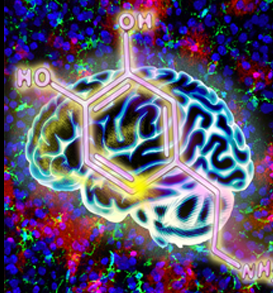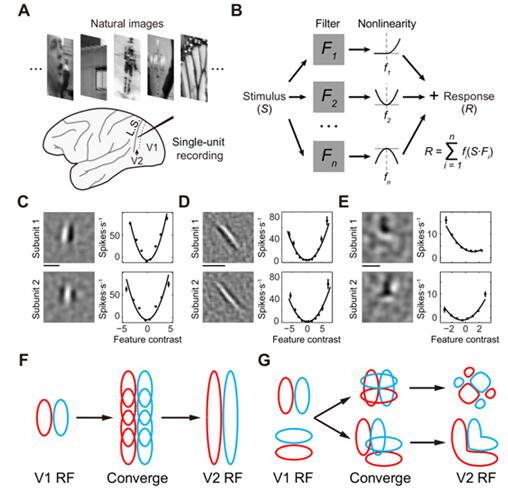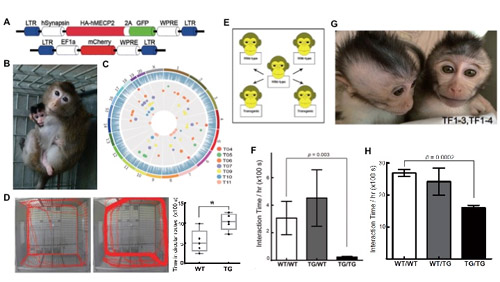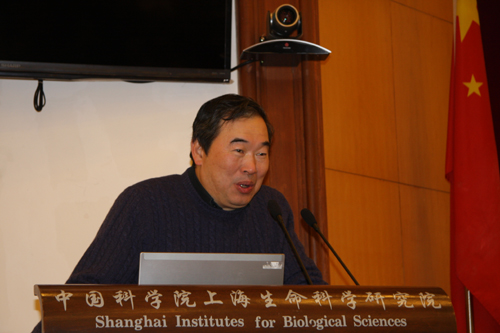
The laboratories of Drs GU Yong, WANG Zheng, and WANG Wei, have collaborated closely to solve the above ‘where’ question, i.e. which visual brain mediates the Pinna illusion, a prerequisite for gaining further insights intothe ‘how’ question, i.e. how neurons in the visual brain integrate local visual cues to form a global representation of a compelling movement illusion.

A recent study published online on February16th in the Proceedings of the National Academy of Sciences demonstrated the fine spatial structure of neuronal receptive field (RF) in awake monkey secondary visual cortex (V2),using electrophysiological recording and computational modeling.

A recent study published in Nature demonstrated that transgenic monkeys overexpressing human autism-related gene MECP2 exhibited autism-like behaviors and germ-line transmission. This work was performed by researchers in Dr. QIU Zilong’s Lab and Dr. SUN Qiang’s team.

In a article published online in NEURON on January 22, entitled "Visual Cue-Discriminative Dopaminergic Control of Visuomotor Transformation and Behavior Selection", Dr. DU Jiulin's lab identified a novel circuit mechanism through which behavior selection is controlled at the stage of visuomotor transformation by a visually responsive dopaminergic-inhibitory neural module.This work was carried out by YAO Yuanyuan, LI Xiaoquan, ZHANG Baibing and collaborators under the supervision of Dr. DU Jiulin. This work was carried out by YAO Yuanyuan, LI Xiaoquan, ZHANG Baibing and collaborators under the supervision of Dr. DU Jiulin.

The 2015 ION Annual Meeting was held at the SIBS Lecture Hall from December 28th to 30th, 2015. Fifty-five ION researchers and new faculty members presented their recent works. Drs. Qiang Sun and Neng Gong reported their interesting findings on primate research. Dr. Qian Hu introduced the equipments and services of the Optical Imaging Facility. Prof. Poo gave a talk entitled “Brain science research in China”. The prizes for the best five presentations were awarded to Han Hou, Bai-Bing Zhang, Han-Fei Deng, Xin Jiang and Dan-Qian Liu.
